Sea ice has been declining in the Canadian North Atlantic since the 1970s, and yet the harp seal population has been estimated to have risen from a little over 1 million in 1971 to about 7.5 million in 2012 to 2019. But model projections suggest the seal populations will decrease in the future due to…declining sea ice.
The inherent inconsistencies of climate science alarmism appears to have escaped the notice of Canadian researchers (Hammill et al., 2021) reporting on the fate of harp seals in the Canadian North Atlantic.
Despite pointing out that models and aerial surveys have shown seal populations increasing ~seven-fold since the early 1970s in this region – including rising from 5.1 million in 2011 to over 7 million by 2019 – the modeling suggests that sea-ice-dependent seals will experience a dramatic population decline in the coming decades.
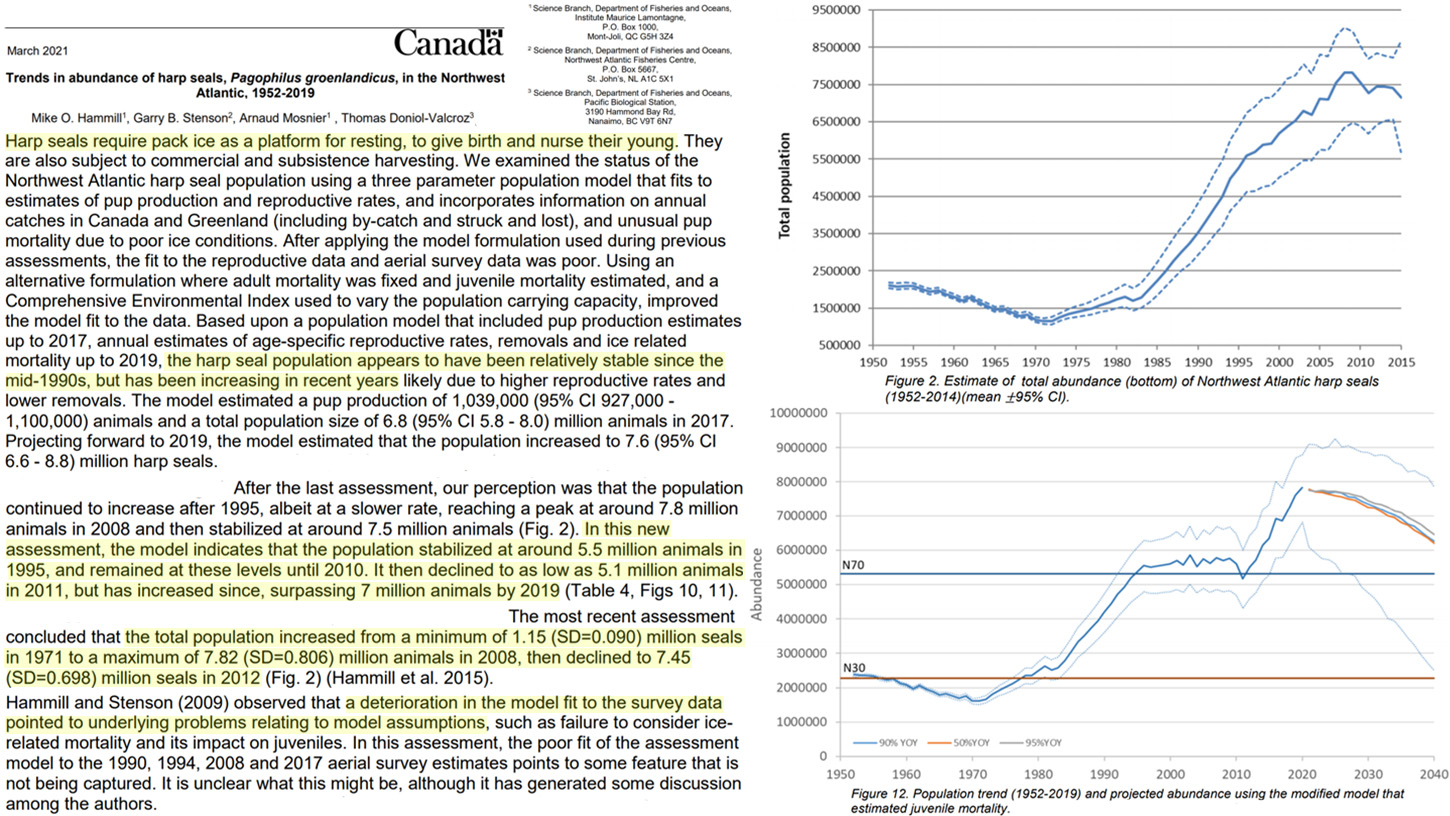
Image Source: Hammill et al., 2021
The study even presents data showing there has been more extensive sea ice in this region during recent years (2014 to 2019) than there was in 1969, 1978, 1981, and 1998. The trend also shows the sea ice in this region was stable to increasing from 1969 to 1995.
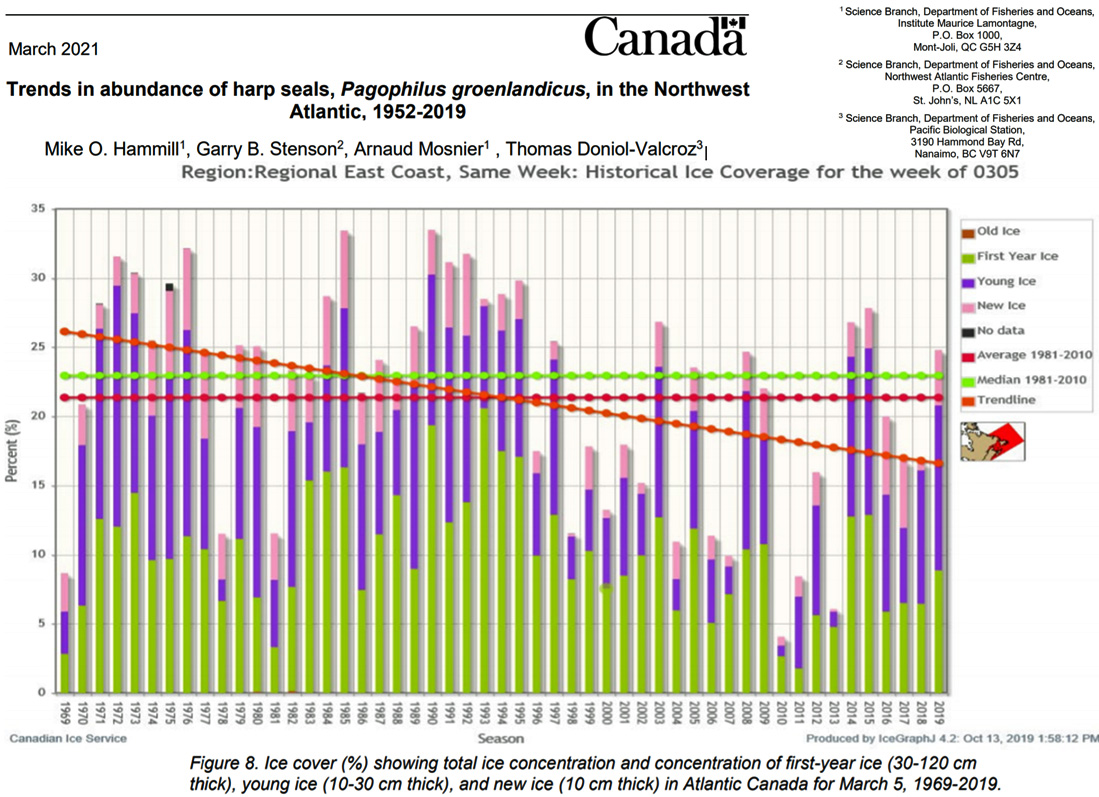
Image Source: Hammill et al., 2021
A recent study (Weckstrom et al., 2020) indicated that northern North Atlantic sea ice has been growing since the 1930s and that sea surface temperatures have been cooling overall for the last 90 years.
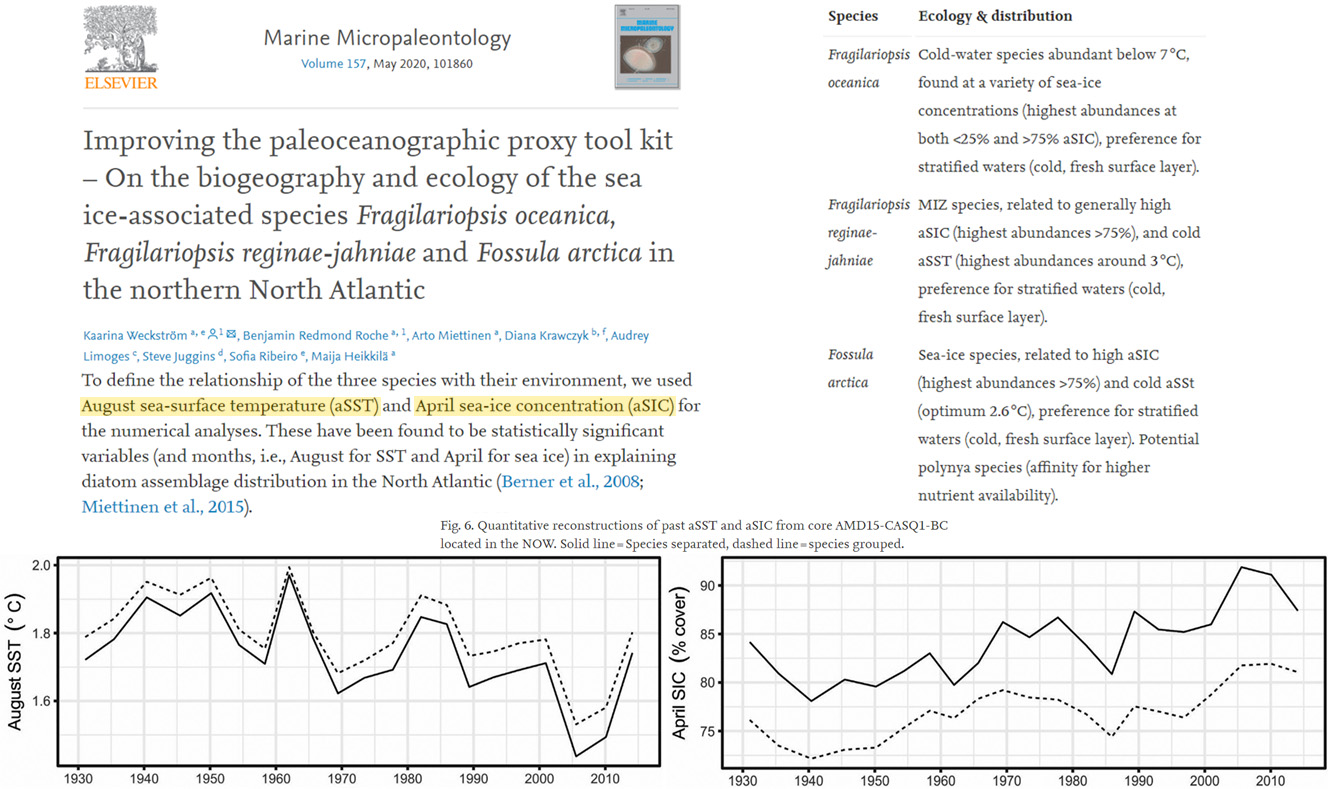
Image Source: Weckstrom et al., 2020
It should be noted that if harp seals are wholly dependent on sea ice presence for survival then it’s a wonder they were able to survive throughout most of the last 10,000 years. Much of the Arctic (north of the North Atlantic) was sea ice free for all but “a couple of months per yr” during these millennia when sea surface temperatures (SSTs) were 2 to 4°C during summer (Brice et al., 2020). Today these same waters are sea ice covered for 10 to 11 months per year and <0°C in summer.
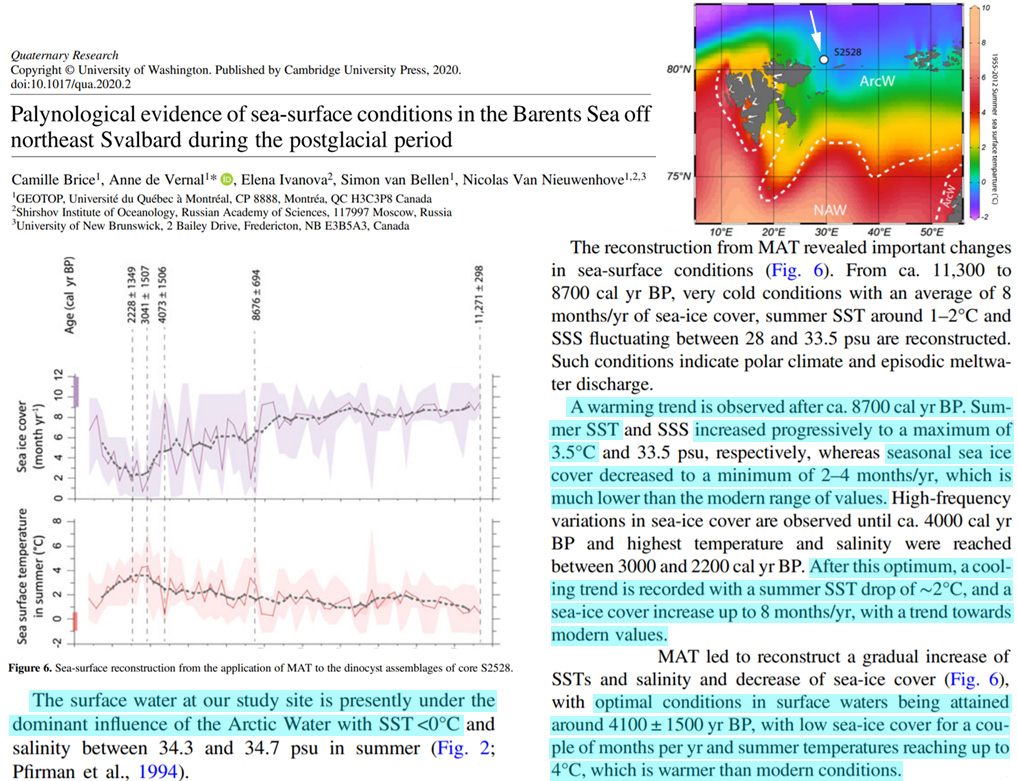
Image Source: Brice et al., 2020
The same picture emerges in the subarctic North Pacific. The Bering Sea was sea ice free year-round throughout the Early Holocene. Today this same region is sea ice covered for 9 months per year (Meheust et al., 2018).
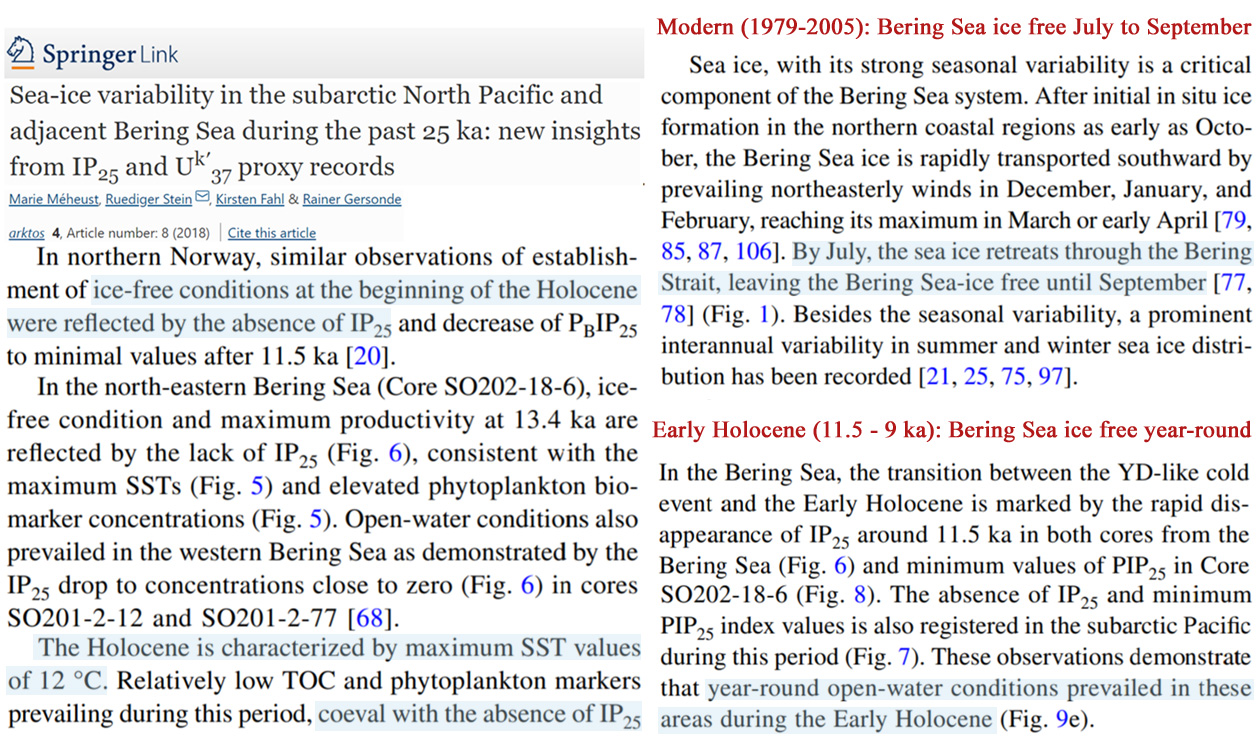
Image Source: Meheust et al., 2018
In sum, the perception that harp seal populations are currently at risk due to declining sea ice trends would appear to be contradicted by evidence that suggests the exact opposite is true.





I’m happy I don’t have to count 7.5 million seals.
That might require a lot of popcorn and beer.
Thanks Kenneth.
Might have to allow Newfoundlanders to start clubbing them again to keep the population in check. The ban on the seal hunt and also on most commercial fishing has no doubt a lot to do with the growth of the seal population.
Science/Conservation ‘experts’ in action:
“A project to preserve endangered Tasmanian devils on a small island has backfired after the predators killed seabirds in large numbers, a conservation group says.”
https://www.bbc.co.uk/news/world-australia-57558396
Let’s face it, experts these days don’t have a clue, and nothing they say/predict is worth tuppence.
[…] Seal Numbers Increased 700% Since The 1970s – But Models Project Future Declines Due To Sea Ic… […]